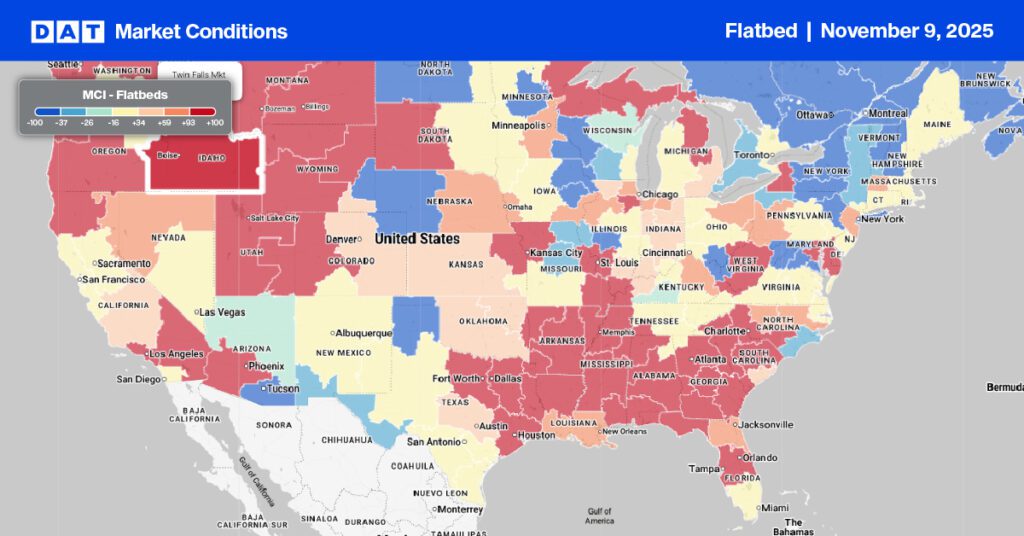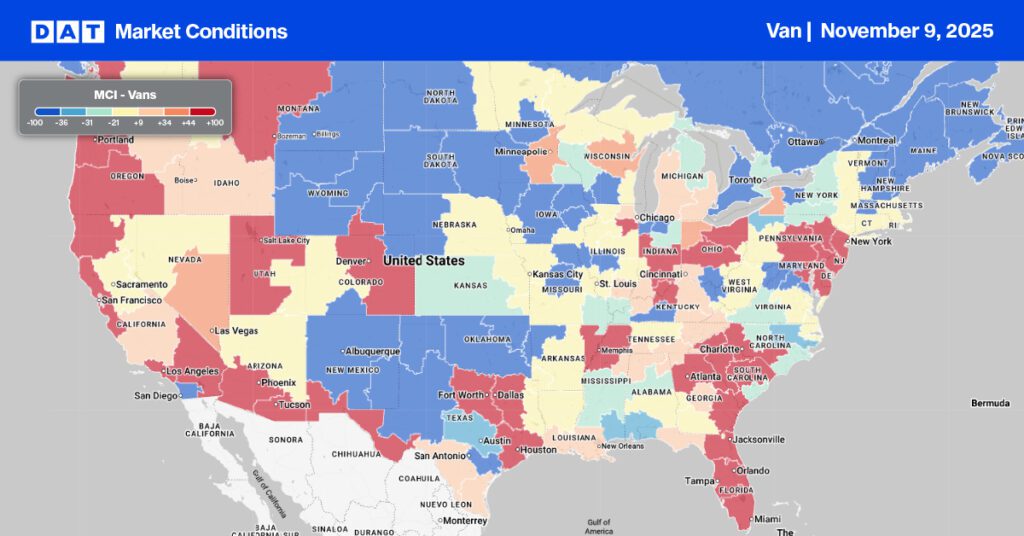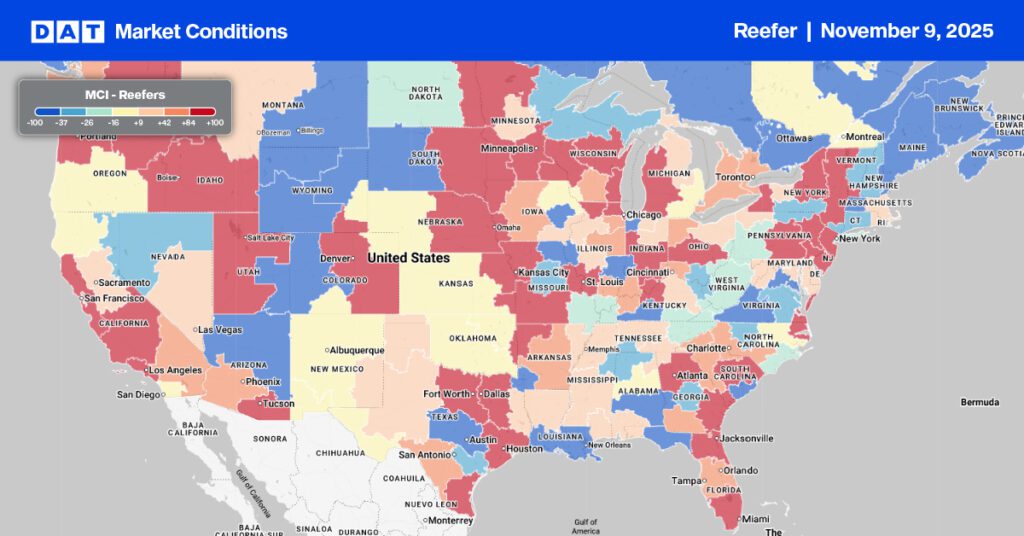In the post-ELD Mandata era, the time available for drivers has become the primary factor in heavy vehicle productivity, and that time is increasingly impacted by traffic congestion.
Each year, the American Transportation Research Institute (ATRI) provides insight into the trucking industry’s national, state, and metro area congestion cost trends based on vehicle operating costs, volume and number of vehicle miles traveled, and speed. The most recent study spanning 2016 through 2021 found the congestion cost to the trucking industry to be $94.6 billion, the highest level to date, and up 27% from $74.5 billion in 2016.
Get the clearest, most accurate view of the truckload marketplace with data from DAT iQ.
Tune into DAT iQ Live, live on YouTube or LinkedIn, 10am ET every Tuesday.
Regarding the impact on available working hours, the 2021 national congestion figure of 1.27 billion hours of delay is the equivalent of more than 460,000 truck drivers sitting idle for one year. On average, annual congestion costs per truck were $6,824. The 2023 report estimates that in 2021, 6.793 billion additional gallons of diesel were wasted due to congestion, costing the industry more than $22.3 billion.
The CO2 production associated with additional fuel use is substantial at 69 million metric tons.
While costs increased in all regions of the county, the congestion cost increases by percentage were highest in the West (45.0%) and the Southeast (32.3%). The congestion cost increases experienced by individual states were primarily driven by truck volume increases resulting from economic growth and increased consumer spending.
The four states with the highest congestion costs were ranked one at the state level: California, Texas, Florida, and New York. These four states alone makeup 30.0% of national congestion costs, and, not surprisingly, this ranking aligns exactly with state population rankings. The New York City Metro area recorded the highest congestion costs for truckers at just over $5 billion in 2021. Miami was ranked second at $2.62 billion, followed by Chicago at $2.57 billion.
Likewise, ATRI’s bottleneck analysis in 2022 showed increased congestion using truck GPS data and found that the average peak hour truck speed across the 300 bottleneck locations dropped 6.1% to 36.3 MPH in 2022. Texas has the highest number of bottlenecks (13) of the Top 100, followed by Georgia (9) and California (8). New York City ranks sixth on the list of states with the most bottlenecks but is home to the country’s most congested section of the interstate highway network. Fort Lee, NJ, on Interstate 95 consistently records an average truck speed of 26.8 mph, dropping to 20.2 mph during peak hours and 10% slower than the prior year.
There is light at the end of the tunnel.
The U.S. Congress passed the Infrastructure Investment and Jobs Act (IIJA), also known as the Bipartisan Infrastructure Law, in November 2021. This bill provides approximately $1.2 trillion in infrastructure investments from 2022 through 2026 and includes approximately $350 billion dedicated to federal highway programs. Infrastructure funding is critical to addressing the congestion costs documented in the ATRI report. In addition to helping improve traffic congestion and truck productivity, the IIJA translates into more freight for trucking companies to haul.


